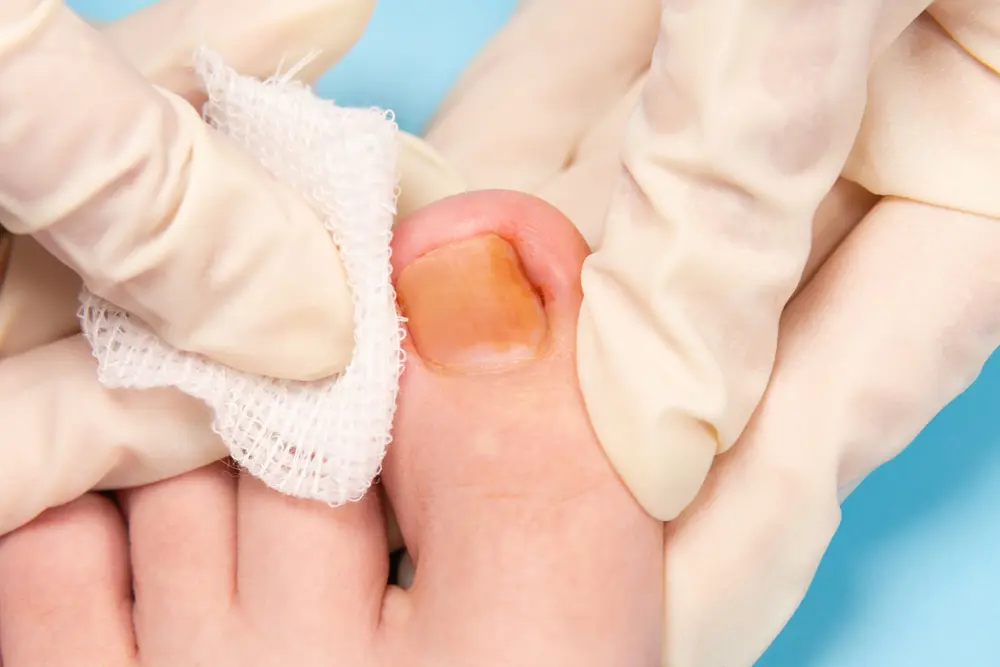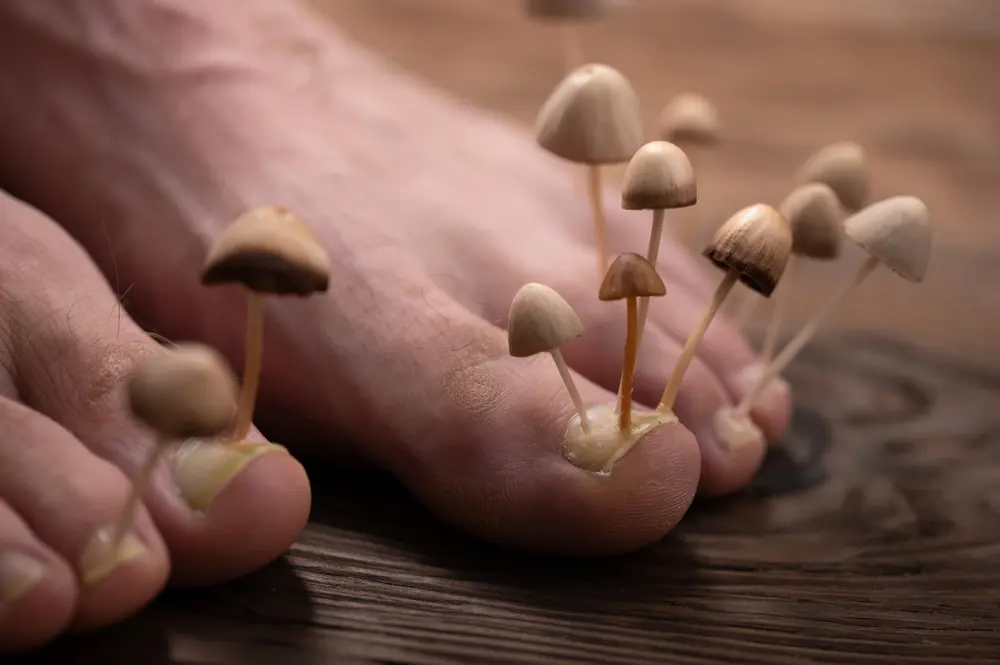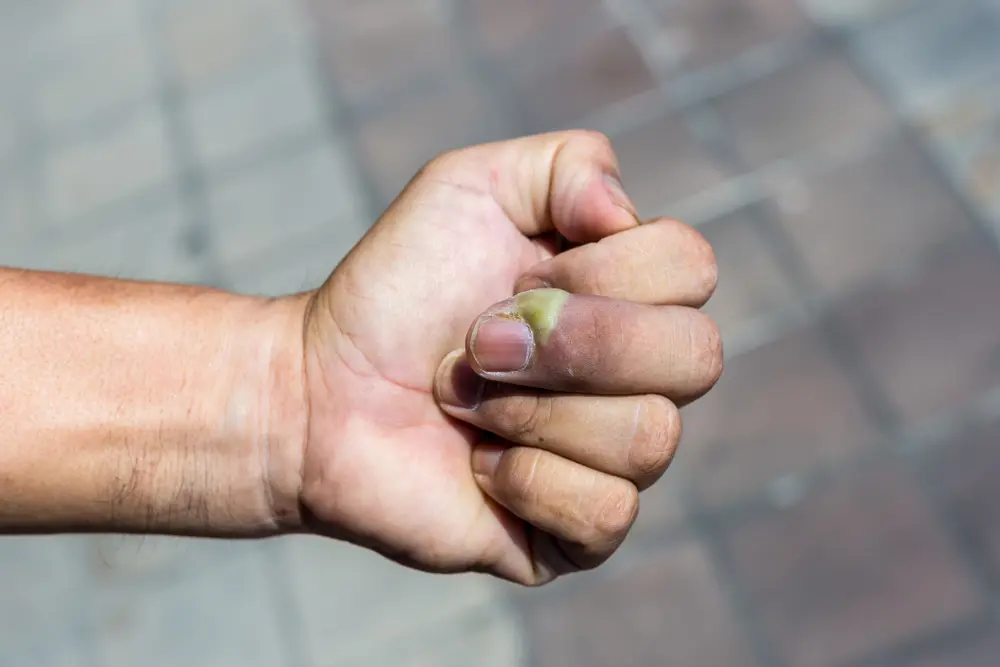Nail Disorder
- Home
- Nail Disorder
Our Doctor

Dr. Rahul Sheshgiri
Dermatologist & Cosmetic Doctor
Nail Disorder

Introduction
Nail disorders encompass a wide range of conditions that affect the health and appearance of the nails. From common issues like fungal infections and ingrown toenails to more serious conditions like psoriasis and nail trauma, nail disorders can cause discomfort, pain, and embarrassment for those affected. In this comprehensive guide, we delve into the world of nail disorders, exploring their causes, symptoms, and available treatment options to help individuals understand and manage these common issues.
Common Types of Nail Disorders
Fungal Nail Infections: Fungal infections of the nails, also known as onychomycosis, are caused by dermatophyte fungi and can affect both the fingernails and toenails. Symptoms may include discoloration, thickening, brittleness, and separation of the nail from the nail bed. Fungal nail infections are common and can be challenging to treat without proper medical intervention.
Ingrown Toenails: Ingrown toenails occur when the edge of the nail grows into the surrounding skin, leading to pain, inflammation, and potential infection. Common causes include improper nail trimming, tight-fitting shoes, and trauma to the toe. Treatment may involve soaking the affected toe in warm water, gentle nail trimming, and antibiotics if an infection develops.
Psoriasis of the Nails: Psoriasis is a chronic autoimmune condition that can affect the skin, nails, and joints. Nail psoriasis may cause pitting, ridges, discoloration, and thickening of the nails, often accompanied by pain or discomfort. Treatment options may include topical corticosteroids, phototherapy, and systemic medications to manage symptoms and prevent complications.
Onycholysis: Onycholysis is a condition characterized by separation of the nail from the nail bed, leading to a white or yellow discoloration and an increased risk of fungal infection. Common causes include trauma, psoriasis, fungal infections, and certain medications. Treatment may involve addressing the underlying cause and keeping the affected nail clean and dry.
Nail Trauma: Trauma to the nails, such as crushing injuries, stubbing, or repetitive pressure, can cause various nail disorders, including subungual hematomas, nail bed lacerations, and nail plate fractures. Treatment depends on the severity of the injury and may involve nail removal, wound care, and splinting to promote healing.
Causes of Nail Disorders

Nail disorders can have various causes, including:
Fungal Infections: Fungal nail infections are commonly caused by dermatophyte fungi and can thrive in warm, moist environments such as sweaty shoes or communal swimming pools.
Poor Nail Hygiene: Improper nail trimming, biting nails, and using dirty or contaminated nail tools can increase the risk of nail disorders such as ingrown toenails and fungal infections.
Medical Conditions: Certain medical conditions, including psoriasis, eczema, diabetes, and peripheral vascular disease, can affect the health and appearance of the nails.
Trauma: Traumatic injuries to the nails, such as crushing, stubbing, or repetitive pressure, can cause nail disorders such as subungual hematomas, nail bed lacerations, and nail plate fractures.
Symptoms of Nail Disorders
The symptoms of nail disorders vary depending on the underlying cause but may include:
Discoloration: Changes in nail color, such as yellowing, white spots, or dark streaks, may indicate fungal infections, psoriasis, or other nail disorders.
Thickening: Thickened nails may be a sign of fungal infections, psoriasis, or trauma to the nail.
Brittleness: Brittle, easily broken nails may be caused by fungal infections, nutritional deficiencies, or excessive exposure to water and chemicals.
Pain or Discomfort: Nail disorders such as ingrown toenails, nail trauma, and nail bed infections can cause pain, tenderness, and inflammation around the nails.
Changes in Nail Shape: Abnormalities in nail shape, such as pitting, ridges, or clubbing, may be associated with certain medical conditions or nail disorders.
Treatment Options for Nail Disorders
Treatment for nail disorders depends on the underlying cause and may include:
Antifungal Medications: Oral or topical antifungal medications are commonly used to treat fungal nail infections. These medications help kill the fungi responsible for the infection and promote healthy nail growth.
Nail Trimming and Care: Proper nail trimming and care can help prevent and manage nail disorders such as ingrown toenails and nail trauma. Trim nails straight across and avoid cutting them too short to reduce the risk of ingrown toenails.
Topical Treatments: Topical treatments such as corticosteroid creams, antifungal ointments, and moisturizers may be used to manage symptoms of nail disorders such as psoriasis and onycholysis.
Nail Surgery: In severe cases of nail disorders, surgical procedures such as nail removal or nail avulsion may be necessary to address the underlying problem and promote healing.
Lifestyle Changes: Making lifestyle changes such as wearing properly fitting shoes, practicing good nail hygiene, and avoiding trauma to the nails can help prevent and manage nail disorders over time.
Conclusion

Nail disorders are common conditions that can affect individuals of all ages and backgrounds. From fungal infections and ingrown toenails to psoriasis and nail trauma, these issues can cause discomfort, pain, and embarrassment for those affected. However, with proper diagnosis and treatment, many nail disorders can be effectively managed, allowing individuals to enjoy healthier, more comfortable nails. If you’re experiencing symptoms of a nail disorder, consult a healthcare professional for evaluation and personalized treatment recommendations. With the right approach, relief from nail disorders is within reach, allowing you to maintain healthy, beautiful nails for years to come.
What People Says!
Hear from our delighted clients as they share their experiences and stories of transformation. Your trust inspires us to keep delivering excellence!



